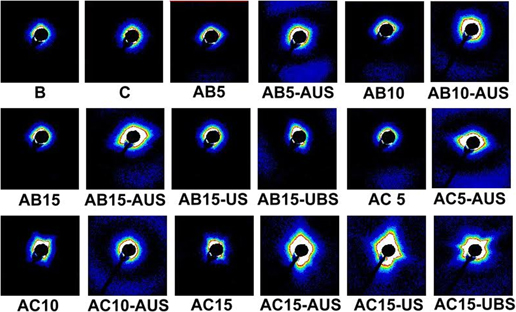Crossref Citations
This article has been cited by the following publications. This list is generated based on data provided by
Crossref.
Nyuui, Tatsuki
Matsuba, Go
Sato, Shuichi
Nagai, Kazukiyo
and
Fujimori, Atsuhiro
2018.
Correlation between gas transport properties and the morphology/dynamics of crystalline fluorinated copolymer membranes.
Journal of Applied Polymer Science,
Vol. 135,
Issue. 2,
Yin, Liangdong
Xu, Ruijie
Xie, Jiayi
Lei, Caihong
and
Cai, Qi
2021.
The crystallization and mechanical properties of poly(4-methyl-1-pentene) hard elastic film with different melt draw ratios.
e-Polymers,
Vol. 21,
Issue. 1,
p.
930.
Habumugisha, Jean Claude
Usha, Zubaida Rukhsana
Yu, Rui
Babiker, Dafaalla M.D.
Wan, Caixia
Chen, Xin
and
Li, Liangbin
2021.
Thermally stable and high electrochemical performance ultra-high molecular weight polyethylene/poly(4-methyl-1-pentene) blend film used as Li-ion battery separator.
Applied Materials Today,
Vol. 24,
Issue. ,
p.
101136.
Jureczko, Mariola
and
Mrówka, Maciej
2022.
Multiobjective Optimization of Composite Wind Turbine Blade.
Materials,
Vol. 15,
Issue. 13,
p.
4649.
Mrówka, Maciej
Franke, Dawid
Ošlejšek, Martin
and
Jureczko, Mariola
2023.
Influence of Citrus Fruit Waste Filler on the Physical Properties of Silicone-Based Composites.
Materials,
Vol. 16,
Issue. 19,
p.
6569.
Mrówka, Maciej
Lenża-Czempik, Joanna
Dawicka, Anahit
and
Skonieczna, Magdalena
2023.
Polyurethane-Based Nanocomposites for Regenerative Therapies of Cancer Skin Surgery with Low Inflammatory Potential to Healthy Fibroblasts and Keratinocytes In Vitro.
ACS Omega,
Vol. 8,
Issue. 41,
p.
37769.
Joszko, K.
Gzik-Zroska, B.
Gzik, M.
Wolański, W.
Ošlejšek, M.
Jureczko, M.
and
Mrówka, M.
2023.
Mechanical and tribological properties of epoxy composites reinforced with food-waste fillers.
Journal of Achievements in Materials and Manufacturing Engineering,
Vol. 120,
Issue. 2 extended,
p.
49.
Sønstevold, Linda
Koza, Paulina
Czerkies, Maciej
Andreassen, Erik
McMahon, Paul
and
Vereshchagina, Elizaveta
2024.
Prototyping in Polymethylpentene to Enable Oxygen-Permeable On-a-Chip Cell Culture and Organ-on-a-Chip Devices Suitable for Microscopy.
Micromachines,
Vol. 15,
Issue. 7,
p.
898.
Gokkurt, Tolga
and
Gokkurt, Yasemen
2024.
Investigation of physical, thermal, mechanical and gas permeability properties of low‐density polyethylene/ poly(4‐methyl‐1‐pentene) blend films and their utilization for fresh‐cut fruit and vegetable packaging applications.
Polymer Engineering & Science,
Yang, Guangzhaoyao
Guo, Yuhang
Yu, Shiyao
Huang, Jing
Zhao, Junyi
Zeng, Shichen
Fan, Haojun
Pan, Fusheng
Zhang, Runnan
and
Jiang, Zhongyi
2024.
Poly(4-methyl-1-pentene)/ polypropylene alloy hollow fiber membrane with high rigidity for blood oxygenation.
Journal of Membrane Science,
Vol. 711,
Issue. ,
p.
123192.
Tu, Guangshui
Zheng, Handou
Yang, Jiahao
Zhou, Haotian
Feng, Chunyu
and
Gao, Haiyang
2025.
High-Performance Polyolefin Material: Synthesis, Properties, and Application of Poly(4-Methyl-1-pentene).
International Journal of Molecular Sciences,
Vol. 26,
Issue. 2,
p.
600.



